When and how to prune apple trees correctly
Pruning is the most important technique when caring for an apple tree. Not only the strength of fruiting and the quality of the fruit, but also the durability of the tree and its resistance to adverse environmental factors depend on its correct and regular implementation.
It can be difficult for novice gardeners to figure out how to prune correctly.This article describes in detail and shows in pictures how to form a crown and prune young and fruiting apple trees.
| Content:
|
|
Proper pruning of an apple tree increases productivity, has a beneficial effect on the health and development of the tree and its longevity. |
Why is pruning necessary?
Apple tree pruning is carried out for:
- formation of the correct crown, which can withstand heavy loads;
- eliminating errors of improper cultivation;
- normal ventilation of the crown and uniform lighting of all branches of the tree;
- regulation of fruiting and growth processes;
- simplifying apple tree care;
- normal exchange of plastic substances between the roots and the crown.
When young apple trees begin to bear fruit, the crown of which has not yet formed, in the first 2 years they produce a good harvest due to the fact that they have formed enough fruits. But later the tree is unable to feed a large number of branches, fruiting stops, and the branches begin to gradually die off.
Without pruning, the apple tree produces few fruits; pests and diseases parasitize the crown. In addition, in a dense crown there is a large amount of foliage along the periphery and an almost complete absence of leaves in the center. Because of this, the young growth is very weak, does not develop and dries out quickly.
With proper pruning, you can control the quantity and quality of the harvest. The frequency of fruiting is very well regulated by this agricultural practice.
Correct formation of the crown allows even a tall apple tree to be turned into a semi-dwarf.
|
With the help of proper pruning, you can reduce the crown of even tall apple trees. |
How to prune apple trees correctly
The formation of apple trees should begin immediately after planting and this event should be carried out annually throughout the life of the tree in the garden.
If a novice summer resident does not know how to properly prune an apple tree and where to start, then you need to start small: cut out rubbing, shading each other, drying out and broken branches. Branches growing inside the crown are useless; they need to be cut out. They do not lay ringlets, shade the crown and contribute to the spread of pests. In addition, due to low light, such a branch has few leaves and draws sap from its neighbors. It must be removed without fail. If this is a good young shoot, then you can cut off not it, but those shoots that shade it, provided that they are less strong. Then in 1-2 years it will form a good branch with a sufficient number of ringlets.
Branches extending at an angle of less than 45° are removed. Their connection with the trunk is fragile, and the smaller the angle of departure, the weaker the connection. A sharp angle will sooner or later lead to the branch breaking off and causing a split. The longer the sharp angle is maintained, the larger the split will be. In this place the wood will always rot and over time either a hollow will form or the apple tree will die.
Increasing the angle of departure of the branch from the stem
If a branch extending at an acute angle cannot be cut down without serious damage to the apple tree, then it can be moved to a more horizontal position. An angle of 55-60° is much more durable and the risk of breakage is greatly reduced. To do this, place a spacer between the trunk and the branch. To achieve the best result, the branch itself is additionally deflected from the trunk to the maximum possible distance and tied to a peg firmly dug into the ground.The apple tree is left in this state until next autumn.
|
Spacer for moving the branch to a horizontal position |
Over the summer, new branches form at the junction, the wood will become less loose, and the fork will increase by 5-15°. In the fall, the pegs and spacers are removed and the result is evaluated. If the angle of departure is still insufficient, then the agricultural technique is repeated again.
The greater the angle of departure from the trunk, the slower the branch grows. Therefore, having placed spacers and pegs, it is pinched (or cut, depending on the thickness) onto the outer bud. Then the growth will grow to the outside, which will also increase the angle of the branch.
Video on how to properly prune apple trees:
Fat shoots or tops
These are shoots that grow vertically upward and extend at a very acute angle. The tops grow extremely quickly, trying to compete with the skeletal branches. A lot of them appear during the decline of the apple tree, when its yield is significantly reduced. The massive appearance of fatty shoots also occurs with very severe pruning, when the apple tree needs to quickly restore the crown.
The tops have very loose wood, do not ripen well and freeze heavily in winter. They must be cut before the wood begins to mature, while they are still green. Fatty shoots thicken very quickly and can break already in winter under the weight of snow or the next year with strong gusts of wind. You cannot hesitate to remove them.
Beginning gardeners should know that tops do not form ringlets, that is, they do not bear fruit.
If the top is already too thick and woody, then it is too late to remove it. Then within 2-3 years it is transferred to the skeletal branch.
|
No crop is formed on the tops, so they need to be cut out |
In the first year, it is diverted from the mother branch to the maximum possible angle and cut by 1/3. Next autumn, the angle of deviation is increased as much as possible and cut again above the lowest branch. Pruning is carried out on the outer branches. If the lower branch is weak, then prune to the outer bud above the first strong branch, removing all overgrown branches below it. After the angle of departure of the fatty shoot from the branch becomes more than 50°, it will begin to grow much more slowly, become overgrown with ringlets and turn into a skeletal branch.
Rules for pruning apple trees
You also need to cut down branches from trees correctly. All apple tree branches are cut into rings. What is a ring? When any branch leaves the trunk, it has an influx. The more horizontally the branch extends, the thicker the influx. For branches extending at an acute angle, it is minimal.
When pruning, the influx cannot be removed; it is the cambium, which gradually tightens the cut site. If you cut it off, the place will become a permanent non-healing wound that will never heal.
When pruning branches, this influx is called “ring” pruning. This thickening is always left. After a short time it will heal and only a small bump on the bark will remain.
|
Always prune the branches of your apple tree correctly, especially thick ones. |
But you can’t leave stumps. The stump dries out and collapses. If you leave a stump after trimming a large branch, then this place will gradually turn into a hollow.
The branch cannot be cut from top to bottom, otherwise the weight will tear off part of the bark. And this will be an unhealed wound. A thick branch is first sawed from below, closer to the trunk. Then, stepping back a little further from the bottom cut, the branch is sawed off.Then there will be no scratches on the bark, and the remaining stump can be easily trimmed.
Pruning young apple trees
Young apple trees are pruned annually. The main thing in this event is systematicity. A young apple tree grows quickly and if excess branches are not cut out in time, then after 2-3 months they thicken and it is no longer possible to remove them without problems for the tree.
The most suitable time for pruning is early spring (March-first ten days of April), before sap flow begins. At this time, the wounds heal faster, and there is no threat of freezing if pruned incorrectly. If there is not enough time, pruning can be done in late autumn (starting in November) and all winter.
Purpose of pruning
The main purpose of pruning young fruit trees is to form a crown. The seedling in the nursery already has 1-2 skeletal branches and they can be developed and formed. But it is possible that the apple tree in the new location will grow other skeletal branches, and these will become non-priority. This can happen due to the fact that when planting the apple tree, the branches will be oriented to the north. Then they form and develop what the tree itself grows. Branches that have become unnecessary are either shortened by 1/3 or completely cut out.
|
By pruning young apple trees, you can form different types of crowns |
In the first year after planting there is nothing to prune. The apple tree develops roots and produces weak growth.
Video about pruning young apple trees:
Technology for pruning apple trees from 2 years after planting
Starting from the second year, regular annual pruning of young apple trees is carried out. The central conductor is shortened by 3-4 buds, then it will stop growing upward and begin to branch. All other branches should be 15-20 cm shorter than the central conductor. Otherwise, they will try to take its place.
Branches extending at an acute angle are bent at an angle of more than 50°. If necessary, bending to the desired angle is carried out over several years. But in 2-3-year-old apple trees, the branches bend well and, if desired, they can be tilted even at an angle of more than 90°. Such branches grow more slowly, but lay a lot of fruits.
When pruning young shoots, you need to decide which bud to shorten. If you need to increase the angle of departure of the branch from the trunk, pruning is done on the outer bud. If you want the young growth to grow upward and inside the crown, cut it to the inner bud. The branch is cut 1-2 cm above the bud. The more the branch grows, the more it is shortened. Weak branches are not shortened at all or cut out completely if there is a stronger backup branch.
When pruning the main branch, it needs to subordinate the branches of the second order, otherwise they will take a dominant position instead of a distant shoot. When shortening a skeletal branch, branches of the second order, equal in size, are cut so that they are 20-30 cm shorter than the main one.
It is impossible to carry out very strong pruning on a young, non-fruiting apple tree. This will only cause increased growth of the tops and delay the date of fruiting. If the branches are severely pruned, the young growths do not ripen by winter and freeze slightly.
|
This is the result you can achieve with proper pruning. |
When forming the crown, the illumination of the branches is taken into account. All branches of the apple tree should be well lit and also have enough space for further growth. They should not touch neighboring branches.
In summer, it is permissible to cut out branches that grow inside the crown and rub against each other. If some shoot tends to overtake the main branch, it is pinched or shortened by 3-5 buds.
All cuts larger than 1 cm are covered with garden varnish. By the beginning of fruiting, the apple tree should have 4-5 formed skeletal branches.
Don't forget to read:
Pruning for reverse growth
This pruning is carried out if the apple tree freezes in winter and 3/4 of the crown dies. In the spring, the leaves of frozen apple trees do not bloom well, and closer to summer the branches begin to dry out. The standard at a height of 20-40 cm is usually under the snow and is not damaged.
If the branches begin to dry out, but a young shoot emerges from the trunk above the grafting site, then the entire crown up to this shoot is removed before it. The remaining young shoot is formed anew. The apple tree will grow a new crown in 3-4 years. All shoots growing below the grafting site are cut out.
|
When the apple tree freezes, you can try this last method of pruning “for reverse growth” |
If there are no shoots on the apple tree above the grafting site, then the entire crown is removed, and a 30-40 cm stump is left above the grafting. Perhaps there are dormant buds that can awaken and begin to grow. But the shoots below the grafting site are not removed in this case. If the next year not a single shoot appears above the graft, then one strong shoot is left below the graft, removing all the others. This escape is wild. The following year, the variety desired by the summer resident is grafted onto it, although this is a rather complicated technique for novice gardeners.
Crown formation
The vast majority of novice gardeners do not give trees any shape. Meanwhile, the correct formation of the crown not only speeds up and improves fruiting, but also gives the tree a beautiful appearance. Main types of apple tree crowns:
- sparsely tiered;
- spindle;
- bowl;
- creeping stylite form.
Most often, novice gardeners end up with a sparsely tiered crown, although the amateur gardener himself may not be aware of this. The “spindle” shape is already a systematic formation of the crown. These two forms were discussed in the article “Caring for a young garden.”
How to correctly form the crown of an apple tree in the form of a bowl
Suitable for both tall and dwarf trees. The large width of the crown contributes to uniform illumination of all branches of the tree. It is convenient to harvest from such an apple tree. The formation of the cup begins in the 2nd year.
If a seedling from a nursery does not yet have formed branches, then the height of the trunk is 50-70 cm. The crown should consist of 3-4 skeletal branches. If it has, then choose 3-4 branches at the same height and form a crown, paying full attention to them.
|
This is what an apple tree looks like shaped like a bowl. |
The next year, we select 3-4 strong branches from a young seedling at a height of 50-60 cm, removing all the branches located above onto the ring. Future skeletal branches can emerge from one point or from different ones, located at a distance of no more than 15 cm from each other. Shoots growing from the trunk below the intended height are deflected as horizontally as possible and shortened by 3-4 buds. Subsequently, they are also cut out, but they cannot be removed immediately, since the apple tree needs leaf mass for growth and development. Shortening and deviation to the horizontal plane slows down their growth and development, which is what is required at the moment. If a branch grows quickly, it is cut out.
The shoots selected for the formation of skeletal branches do not bend much in the first year of formation. The angle of their departure from the trunk should be 45°. This is done so that the tree “creates the feeling” that it is growing vigorously.Then the apple tree will not produce extra shoots in unnecessary places. If any branch tries to stand more vertically, then it is deflected with the help of a spacer or tying.
By autumn, the selected branches should strengthen, become thick and powerful. After leaf fall, the central conductor is cut off above the upper skeletal branch. Cut out all the lower shoots.
Next spring, the stronger shoots are pinched into 2 buds and deviated from the trunk by 50°. Make sure that no shoot stands up more vertically and tries to take the place of the central conductor. In this case, it is pinched again and transferred to a more horizontal position.
In subsequent years, these skeletal branches grow overgrown and thicken, turning into a single branching node. They are deviated from the standard by 55-70° for the 3-4th year of cultivation. In the future, they help the bowl to grow as wide as possible.
|
A significant disadvantage of this forming is that wood takes up a lot of space. |
In an adult state, a correctly formed bowl is a spreading tree, the diameter of which can be up to 5-6 m. During the fruiting period, the bowl is not allowed to thicken by regularly pruning and renewing the fruits.
Usually the bowl is formed from three branches, and the fourth is left for safety net. If the three main ones develop normally, then the fourth one is cut out in the 2nd year of crown formation. Although it is possible to form a 4-branch bowl.
Educational video about forming the crown of an apple tree in the form of a bowl:
Slate or creeping form
Such a crown is formed when growing apple trees in harsh climates (Siberia, Karelia, etc.). It is not found in other regions, but in the Non-Black Earth Region and to the north, where there is a lot of snow in winter, such a crown can be formed for growing southern varieties.Apple trees will bear fruit regardless of winter temperature. The first fruits on such apple trees appear already in the 2-3rd year, and full fruiting occurs in the 4-5th year. For novice gardeners, such pruning and shaping the crown of an apple tree may seem too complicated, but in fact everything is quite simple.
The creeping form can be formed on dwarf and semi-dwarf trees. On tall apple trees, this form is unsuitable, since the tree will still strive upward, and it will not be possible to form a stele from it.
|
Apple trees formed in this way winter safely under the snow even in severe frosts |
With a creeping form, the main branches are 10-15 cm from the ground, and the crown is at a height of 30-45 cm. It is formed on a 2-year-old seedling. If it is too large, then the creeping shape will no longer work.
The seedling is planted vertically. After 3-4 weeks (for spring planting) or next spring (for autumn planting), the top is shortened by 15-20 cm, and the stem is bent to the ground and secured with hooks. The stem should be inclined to the ground by 30-40°, the cut point of the thorn should be directed towards the ground, and the top should be oriented to the south or west. The shoots are oriented in different directions and also pinned with hooks. The standard is 15-30 cm. Everything below is cut out. The branches that will be at the bottom when the apple tree is tilted are cut out. The shoots on the sides are bent at an angle of 40-45°. With such a crown, the branches do not necessarily have to extend at an angle of more than 45°. The angle can be smaller, the main thing is to arrange them so that they do not interfere with each other.
Non-lignified shoots are bent down. Lignified branches break when you try to bend them too much
After a year, if the crown becomes too thick, it is thinned out. The slate form should contain 4-5 skeletal branches.Excess shoots are removed, and the central conductor is also cut out.
When vertically growing shoots appear on top of the skeletal branches, they are pressed to the ground. They serve to retain snow in the spring. Later in the spring, if they are needed, they are left, if not, they are cut out. If they need to be preserved, then bend them back and pin them in the direction opposite to the growth of the main branch. In order for the branches to lay more fruits, they are pinched at the end of June by 4-5 cm.
In summer, the hooks are removed and the stanza is raised slightly. Then you can cultivate the soil under the apple tree, water it and apply fertilizers without damaging the branches. For the winter it is again pressed to the ground.
|
Pruning slate apple trees is much easier and more convenient. |
Pruning is carried out in the same way as for other crowns: branches that thicken the crown, rubbing against each other and shoots growing inside the crown are cut out. There are various forms of stlants: Minusinsk, Arctic, plate, etc. The difference lies in the location of the main branches of the crown.
There are other types of formation of apple tree crowns. But all of them are difficult for beginner gardeners and are practiced only by professionals.
Pruning fruiting apple trees
There are 3 periods in pruning fruit-bearing apple trees:
- Initial period of fruiting.
- Full fruiting.
- The extinction of the tree.
Pruning during initial fruiting
In the initial period, the apple tree actively grows, lays fruits and gives good young growth, and also bears fruit. During this period, the formation of the crown continues. All shoots that thicken and darken the crown and grow inside it are cut out. The apple tree continues to grow many extra shoots, which are removed.The tops are cut out; it makes no sense to convert them into fruit-bearing branches, since the apple tree already produces enough full-fledged branches. Continue to bend branches that extend at an acute angle.
Strong pruning is not done, as this will provoke the appearance of a large number of tops. And there is no need to heavily prune the apple tree during this period.
Don't forget to read:
Pruning an apple tree during the period of full fruiting
The number of growths decreases and pruning is carried out to stimulate the laying of fruits.
Old branches are cut to 1/3 of their length. During this period, the crown of tall apple trees is reduced. To do this, shorten the main trunk and skeletal branches by 1/4. But the main trunk(s) should always be 15-20 cm higher than the skeletal branches, otherwise they will try to dominate. All growths are shortened by 10-15 cm. The resulting growth is cut off again and bent to a more horizontal position. This promotes the laying of a large number of fruits.
|
Shortening branches of an adult, fruit-bearing apple tree |
Pruning during tree decline
During this period, anti-aging pruning is carried out, then within a couple of years the apple tree will grow a new crown. Rejuvenation of apple trees is carried out over 3 years, each year removing 1/3 of the old branches. And only when the branches die off is complete rejuvenating pruning possible in one year, but there is no guarantee that the apple tree will survive.
In the first year, 1/3 of the crown is cut off. A powerful young branch is found on the skeletal branches, extending from the trunk at the desired angle, and the skeletal branch is cut down onto this branch. The next year, young growth is shortened by 10-15 cm.If the growth is small, then it is pinched into 2-3 buds to stimulate further branching.
Many tops often appear on an old branch. Then it is cut to the top closest to the trunk, and the top itself is given a more horizontal position and pinched into 3-5 buds. The next year, the top is bent back as far as possible and pinched again. As a result, instead of a top, a young skeletal branch appears.
|
This is how you can get a fruiting branch from a top |
Over the next 2 years, the rest of the crown is rejuvenated in the same way. Properly carried out anti-aging pruning extends the fruiting period of an old apple tree by 5-10 years, and then the tree still dries out. This technique can extend the life of the apple tree until the young trees begin to bear fruit.
Video of rejuvenating pruning of an old apple tree:
Conclusion
Pruning and shaping the crown of an apple tree is the most important event in the life of a tree. A lot depends on it: the life and longevity of the apple tree, its health, fruiting and size of the fruit, the height of the tree and the intensity of its development. It is impossible to do without pruning in the garden. Without it, the apple tree grows wild, the fruits become smaller, and the tree itself turns into a breeding ground for diseases and pests. This is why all novice gardeners should learn how to prune apple trees correctly.
Similar articles:
- Peach pruning for beginner gardeners ⇒
- Rules for pruning tall cherries ⇒
- Rejuvenating pruning of old trees instructions for beginners ⇒
- Pruning gooseberries in spring and autumn: tips for beginner gardeners ⇒
- How to properly prune black and red currants ⇒
- How to properly prune raspberries in spring, summer and autumn ⇒
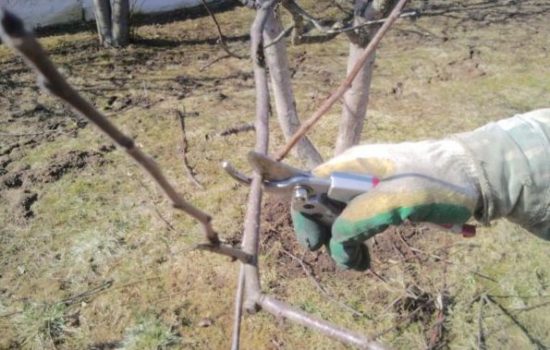
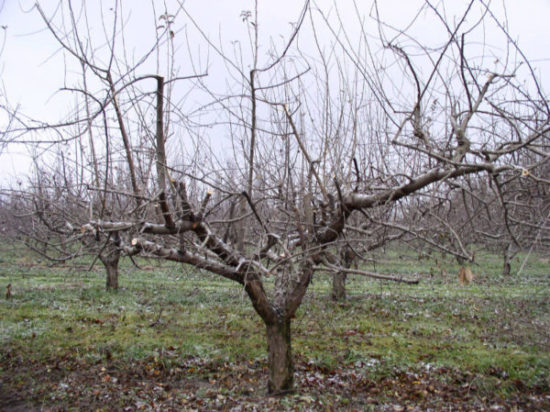
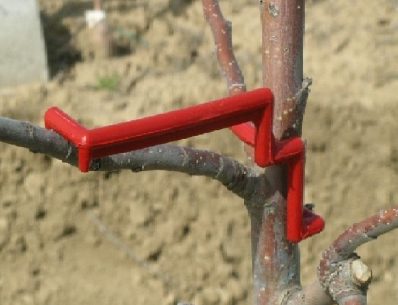
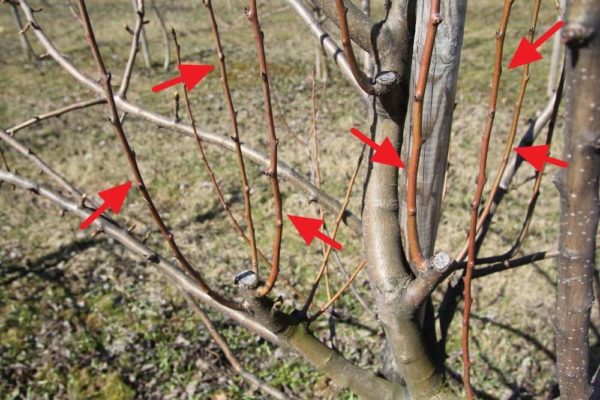
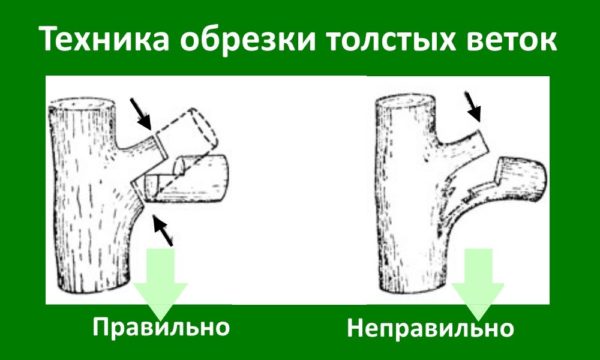
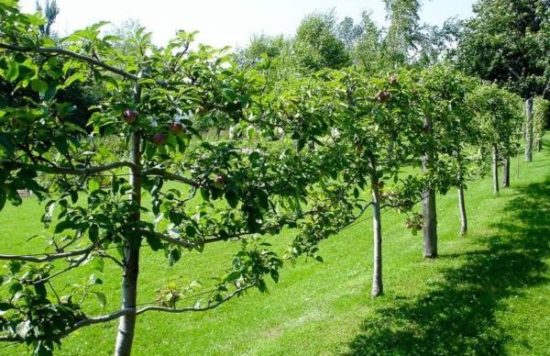
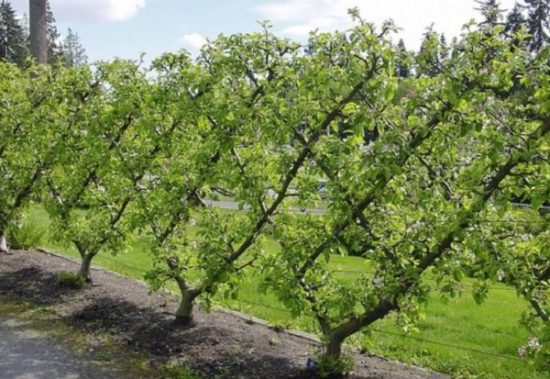

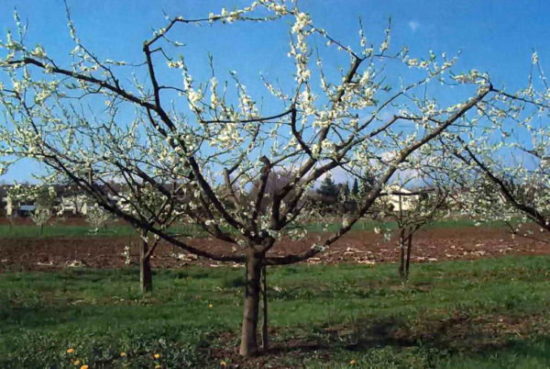
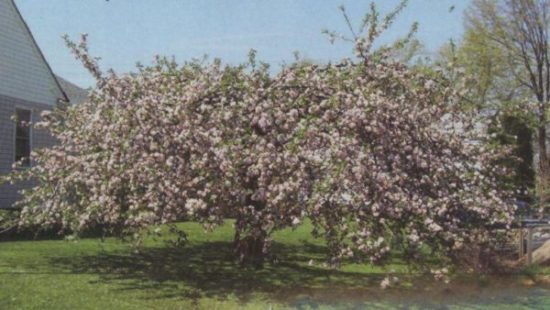

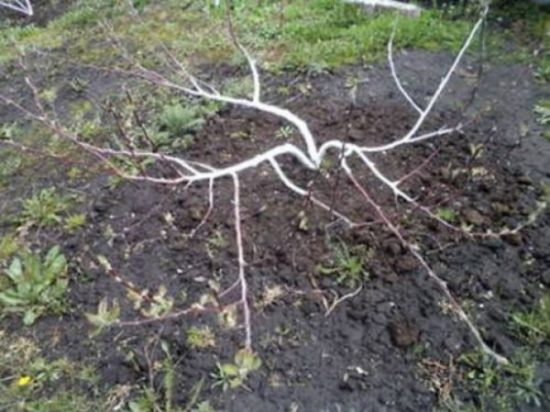
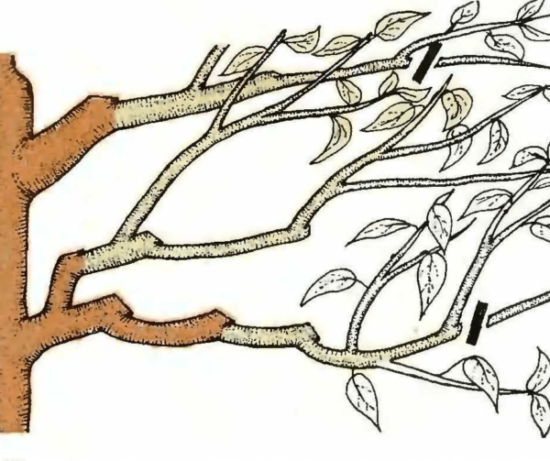
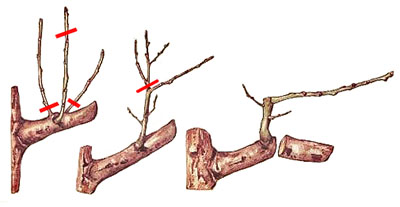

 CUCUMBERS NEVER GET SICK, I'VE BEEN USING ONLY THIS FOR 40 YEARS! I SHARE A SECRET WITH YOU, CUCUMBERS ARE LIKE THE PICTURE!
CUCUMBERS NEVER GET SICK, I'VE BEEN USING ONLY THIS FOR 40 YEARS! I SHARE A SECRET WITH YOU, CUCUMBERS ARE LIKE THE PICTURE! You can dig a bucket of potatoes from each bush. Do you think these are fairy tales? Watch the video
You can dig a bucket of potatoes from each bush. Do you think these are fairy tales? Watch the video
 How our fellow gardeners work in Korea. There is a lot to learn and just fun to watch.
How our fellow gardeners work in Korea. There is a lot to learn and just fun to watch. Eye trainer. The author claims that with daily viewing, vision is restored. They don't charge money for views.
Eye trainer. The author claims that with daily viewing, vision is restored. They don't charge money for views. A 3-ingredient cake recipe in 30 minutes is better than Napoleon. Simple and very tasty.
A 3-ingredient cake recipe in 30 minutes is better than Napoleon. Simple and very tasty. Therapeutic exercises for cervical osteochondrosis. A complete set of exercises.
Therapeutic exercises for cervical osteochondrosis. A complete set of exercises. Which indoor plants match your zodiac sign?
Which indoor plants match your zodiac sign? What about them? Excursion to German dachas.
What about them? Excursion to German dachas.